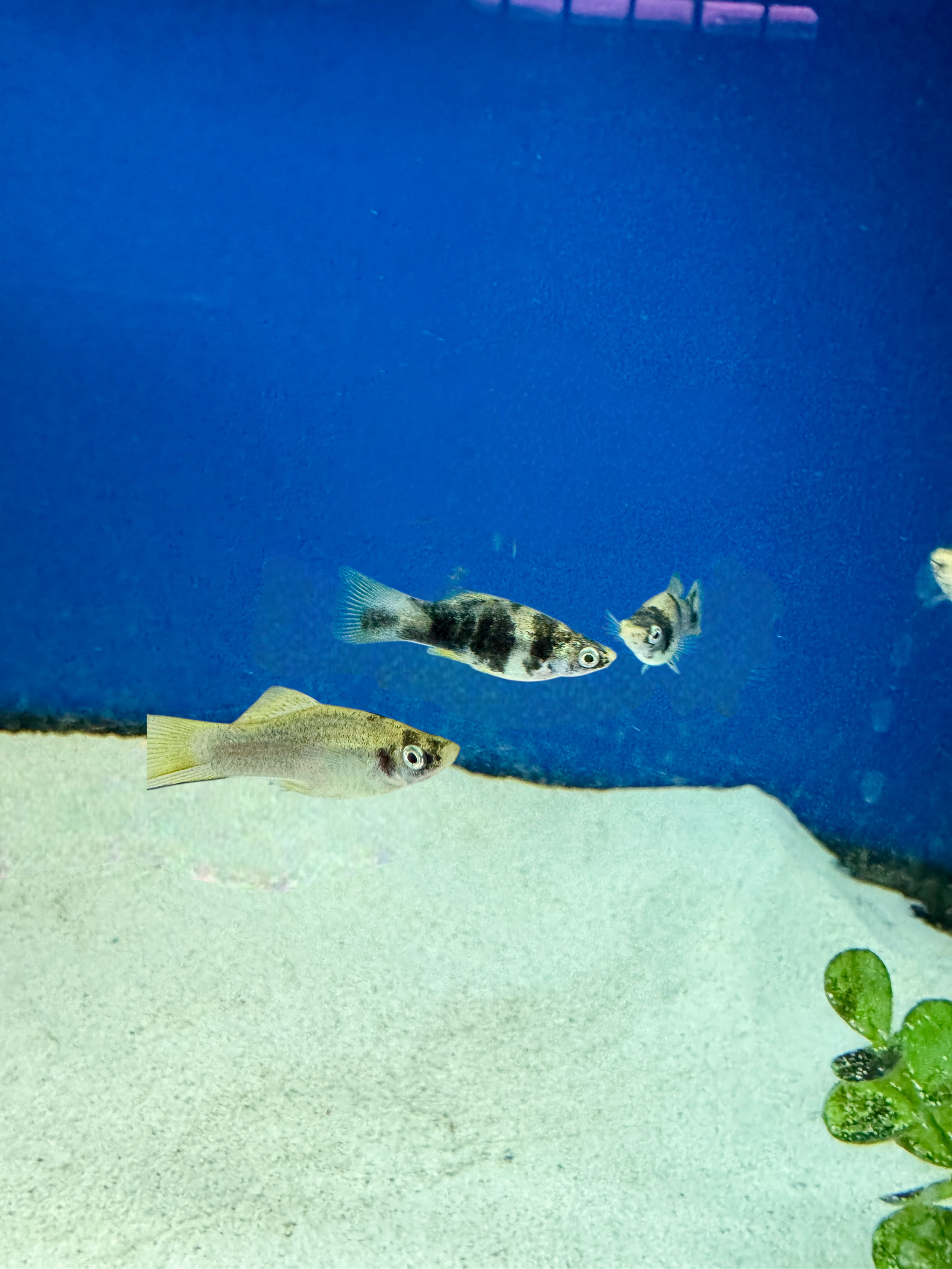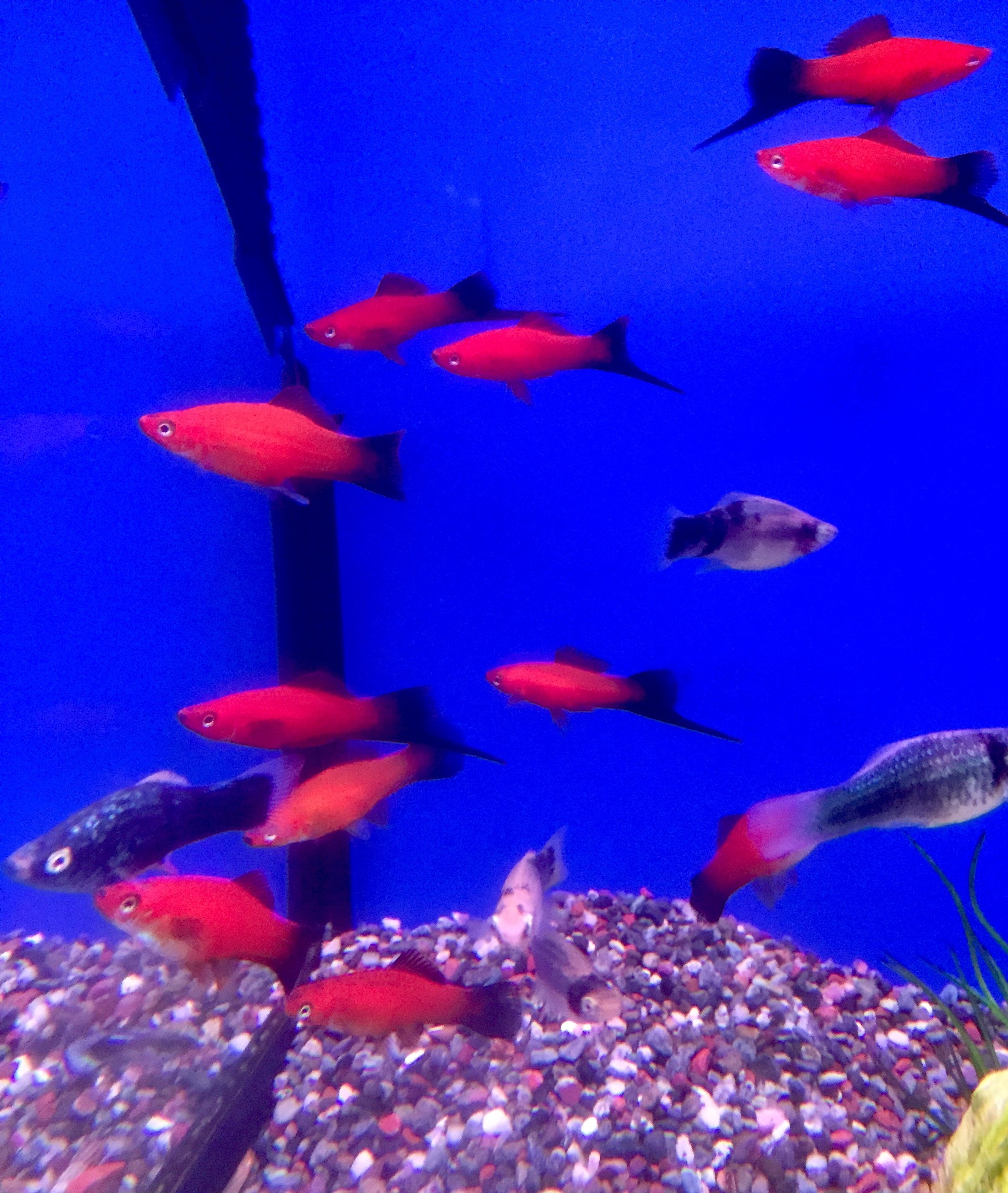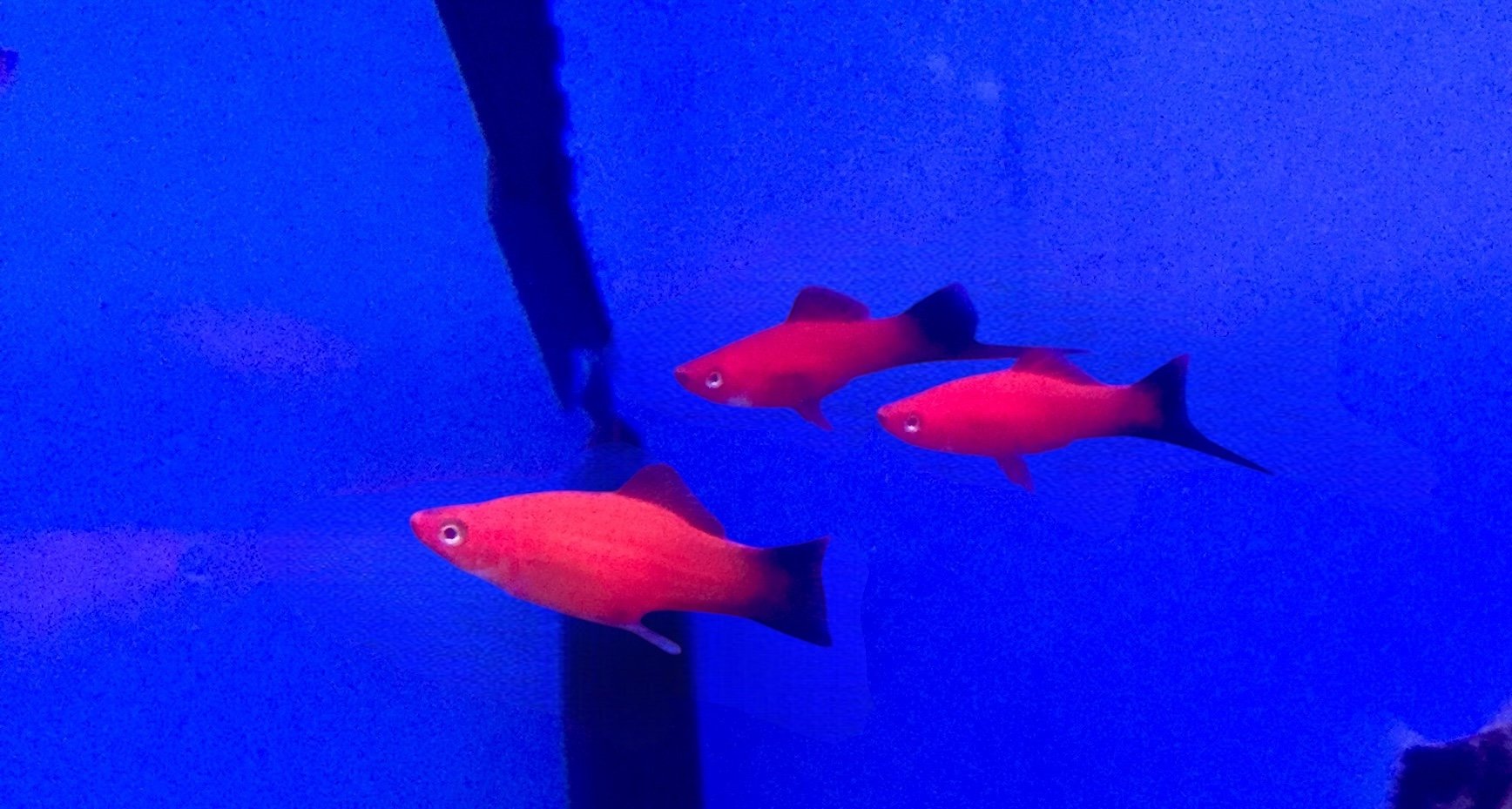Scientific name: Xiphophorus hellerii
Common name: Swordtail
Adult Size: Males: 2.5 to 3.5 inches (6.4 to 8.9 cm), Females: 2.5 to 4 inches (6.4 to 10.2 cm)
Temperature Range: 70 to 82°F (21 to 28°C)
pH Range: 7.0 to 8.0
Compatibility: Generally peaceful, but males can be slightly aggressive towards each other
Minimum Tank Size: 60 liters, but a larger tank is better for a group
Originates from: Central America, specifically Mexico and Guatemala
Ideal Substrate: Fine sand or small, smooth gravel
Ideal Tank Mates Suggestions: Peaceful fish such as Tetras, Guppies, Platies, Mollies, and other small, community fish
Fish to avoid: Aggressive or large fish that might see the Swordtail as food
Diet: Omnivorous; they will eat a variety of foods including flake food, live food, and algae
Breeding: Swordtails are livebearers and are known for their ease of breeding. Females can give birth to up to 80 fry at a time. Providing dense plants or a breeding box can help protect the fry from being eaten by adult fish.



